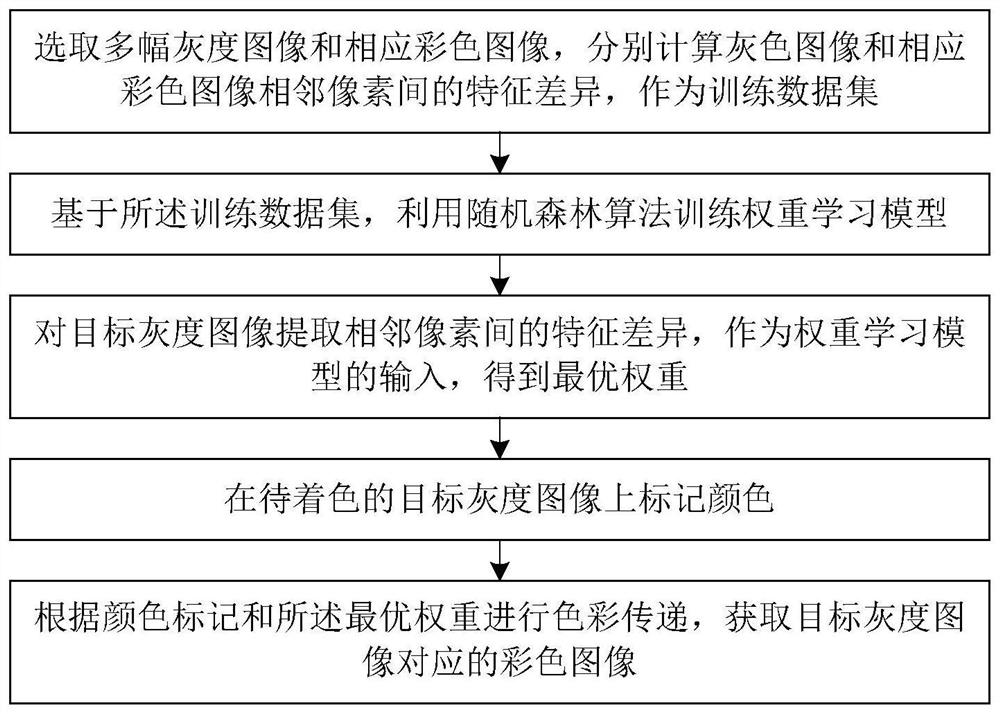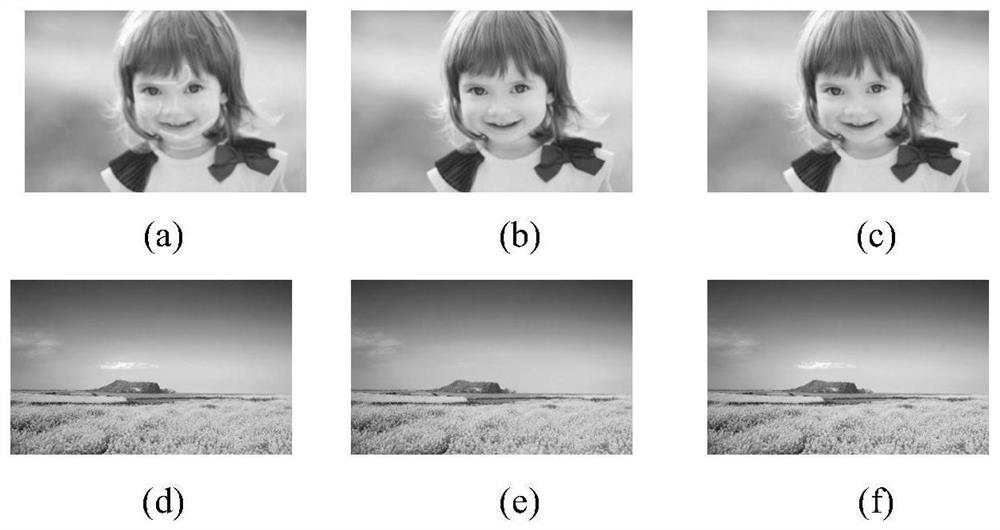Coloring method and device based on weight learning
A weight and learning model technology, applied in the direction of texture/color, 2D image generation, instrument, etc., can solve problems such as no clear description, and achieve good coloring effect
- Summary
- Abstract
- Description
- Claims
- Application Information
AI Technical Summary
Problems solved by technology
Method used
Image
Examples
Embodiment 1
[0042] This embodiment discloses a coloring method based on weight learning, including the following steps:
[0043] Step 1: Select multiple grayscale images and corresponding color images, respectively calculate the feature difference between the adjacent pixels of the gray image and the corresponding color images, as the training data set;
[0044] The training set includes two parts, one is the feature difference between pixels in the grayscale image, and the other is the color difference in the color space. On the prepared grayscale image and color image pair, calculate the feature difference F rs and color difference D rs , Frs and D rs Do vectorization processing respectively, F rs Is a two-dimensional vector, representing the two-dimensional vector of brightness and gradient of adjacent pixels, D rs is a one-dimensional vector representing the color difference. L represents the number of relationship pairs between adjacent pixels. Will (F rs ,D rs ) as the train...
Embodiment 2
[0071] The purpose of this embodiment is to provide a computing device.
[0072] A coloring device based on weight learning, comprising a memory, a processor, and a computer program stored in the memory and operable on the processor, the processor implements the following steps when executing the program, including:
[0073] Step 1: Select multiple grayscale images and corresponding color images, respectively calculate the feature difference between the adjacent pixels of the gray image and the corresponding color images, as the training data set;
[0074] Step 2: Based on the training data set, use the random forest algorithm to train the weight learning model;
[0075] Step 3: mark the color on the target grayscale image to be colored;
[0076] Step 4: Extract the feature difference between adjacent pixels from the target grayscale image, and use it as the input of the weight learning model to obtain the optimal weight;
[0077] Step 5: Perform color transfer according to ...
Embodiment 3
[0079] The purpose of this embodiment is to provide a computer-readable storage medium.
[0080] A computer-readable storage medium having stored thereon a computer program for coloring grayscale images, the program performing the following steps when executed by a processor:
[0081] Step 1: Select multiple grayscale images and corresponding color images, respectively calculate the feature difference between the adjacent pixels of the gray image and the corresponding color images, as the training data set;
[0082] Step 2: Based on the training data set, use the random forest algorithm to train the weight learning model;
[0083] Step 3: mark the color on the target grayscale image to be colored;
[0084] Step 4: Extract the feature difference between adjacent pixels from the target grayscale image, and use it as the input of the weight learning model to obtain the optimal weight;
[0085] Step 5: Perform color transfer according to the color mark and the optimal weight, an...
PUM
 Login to View More
Login to View More Abstract
Description
Claims
Application Information
 Login to View More
Login to View More - R&D
- Intellectual Property
- Life Sciences
- Materials
- Tech Scout
- Unparalleled Data Quality
- Higher Quality Content
- 60% Fewer Hallucinations
Browse by: Latest US Patents, China's latest patents, Technical Efficacy Thesaurus, Application Domain, Technology Topic, Popular Technical Reports.
© 2025 PatSnap. All rights reserved.Legal|Privacy policy|Modern Slavery Act Transparency Statement|Sitemap|About US| Contact US: help@patsnap.com



